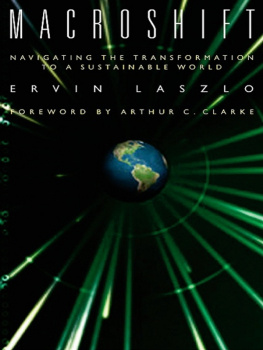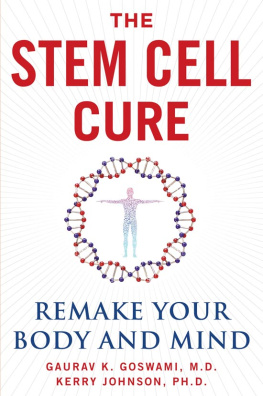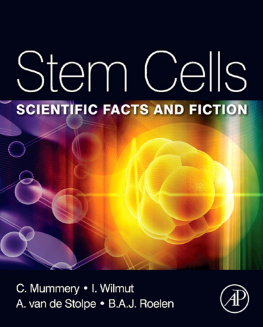

INFORMATION MEDICINE

There are moments in the history of science that profoundly redirect the practice of medicine. It may be that the research findings encountered in this book will rank as an equally memorable moment. If, as seems likely, this research significantly relieves human suffering worldwide, Pier Mario Biava will come to stand in medicines pantheon alongside giants such as Anton van Leeuwenhoek, William Harvey, Ignaz Semmelweis, and many other visionaries whose insights have diminished human misery and increased the probability that the human spirit will soar.
LARRY DOSSEY, M.D., AUTHOR OF REINVENTING MEDICINE: BEYOND MIND-BODY TO A NEW ERA OF HEALING
This book gifts us in extraordinary ways. It informs us and re-connects us to that pristine in-forming field of reality that underlies our existence. Furthermore, it opens up a field of medical research that has the potential to reorder the entire biological domain, to counteract disease predispositions, reverse disease conditions, and invigorate health.
RAOUL GOLDBERG, M.D., MEDICAL DIRECTOR OF THE PATH TO HEALTH CANCER CENTER AND AUTHOR OF ADDICTIVE BEHAVIOUR IN CHILDREN AND YOUNG ADULTS AND AWAKENING TO CHILD HEALTH
Information Medicine not only covers the breadth of a new paradigm of regenerative medicine but also reinforces and documents the cutting edge of science that is unfolding before our eyes. It also looks at the science-backed research of how health problems will be treated in the not too distant future. This book is extremely well researched and documented, exhibiting a range and breadth of knowledge ranging from vibrational medicine to quantum physics to epigenetics and pluripotent stem cells to reprogram cancer cells. An important contribution to the field of regenerative medicine, a must-read for anyone interested in this topic.
ELISA LOTTOR, PH.D., H.M.D., EXPERT IN NUTRITION, HOMEOPATHY, AND ENERGY MEDICINE; INTERNATIONAL LECTURER; AND AUTHOR OF THE MIRACLE OF REGENERATIVE MEDICINE AND FEMALE AND FORGETFUL
FOREWORD
Deepak Chopra, M.D.
I ts a natural part of any discovery to find yourself lying awake at night, settling down from the excitement of a breakthrough, and saying to yourself, If Im right, this changes everything. Most of the time, however, everything doesnt change. If the discovery winds up being accepted, you might be fortunate, and a few things will change.
The ideas forwarded in this new book by Ervin Laszlo and Pier Mario Biava are rare, even in a rapidly changing landscape where science is reevaluating time-honored concepts on every side. The seed idea of in-formation has the potential to change everythingfor real. The first headline that is likely to emerge from the breakthrough described in these pages will focus on cancer. The clinical results with advanced liver-cancer patients detailed in part two are startling. But Id like to dwell for a moment on the larger implications of in-formation, because in fact cancer treatments and all the other medical applications described in this book, hugely promising as they are, only hint at a paradigm shift that could break open our accepted notion about what is real.
The real reality isnt an issue for 99 percent of working scientists, or a large percentage of nonscientists, because they have found a work-around that keeps daily life flowing in well-worn grooves. Scientists and nonscientists alike navigate the day trusting the evidence of the five sensesaccepting as a given the physical world out there. This is a work-around because the quantum revolution more than a century ago caused the substantial, hard-edged, solid physical world to vanish. What the five senses report, and the notion of tiny, tiny things (atoms and molecules) that pile up to form big, big things (stars and galaxies) was negated once and for all.
This discovery, which has been described endlessly since the pioneering era of Einstein, Heisenberg, Schrdinger, and their brilliant colleagues, got sidelined by everyday life. The entire universe may vanish into an invisible dimension devoid of time, space, matter, and energy, but that obviously isnt visible when you drive your car to work or watch a sunrise. The continuity of the world that we occupy every day undermines any abstruse theory about reality. This has remained true decades after the eminent astronomer and physicist Sir Arthur Eddington drily noted, It is difficult for the matter-of-fact physicist to accept the view that the substratum of everything is of mental character. And working science, including medicine, has turned its back on the insight of another eminent physicist, Sir James Jeans, who is worth quoting at length: The universe begins to look more like a great thought than like a great machine. Mind no longer appears to be an accidental intruder into the realm of matter... we ought rather to hail it as the creator and governor of the realm of matter.
Laszlo and Biava return us directly to this insight, and the reason their book has a chance to change everything is that they provide an entry into everyday life. They have clinical proof for turning on its head the accepted default that we are biological machines that some-how learned to think. Rather, we are minds that learned how to create a body.
The authors invoke the late British physicist David Bohm, who spent his career maintaining that the visible order observable in the created universe, from the level of quantum activity to the most evolved forms, including human DNA, was controlled by an invisible organizing principle or force. This invisible agency exists outside time and space, but it informs every structure in creation, and to that end Bohm devised the term in-formation. As intriguing as his idea wasthis entire book is devoted to showing exactly how right he happened to bethere was widespread resistance among fellow physicists.
The reasons for this, aside from sheer prejudice and mental laziness, came down to a clash with long-accepted assumptions that formed a kind of Chinese wall against Bohms insight. One assumption is that matter is more real than mind; another is that reality must be broken down into measurable units. Bohm couldnt actually point to a measurable force or offer any material evidence for in-formation. His chief ally, intellectually speaking, was negative logic. Without in-formation, there was no viable way to explain the intricacies of evolving forms in the universe and the astonishing complexity of their design. But luck wasnt with him in a context where design had become a poisoned word in science, thanks to reactionary religious fundamentalists.
Whole books have been devoted to the relationship of mind and matter, how consciousness came about, and where the universe, along with life on Earth, is evolving. Biava and Laszlo have made a wise decision by talking to other scientists, including the medical community, in terms they already accept. Climbing down from the ladder of philosophy, they present hard evidence. Surely this is the right path, for the time being. The Chinese wall that kept Bohm isolated until his death in 1992 wont crumble until consciousness is taken seriously as a viable subject of research, because the terms Bohm had to use in order to communicatemind, matter, force, agency, and so onare red herrings when the real reality is consciousness.
Next page















